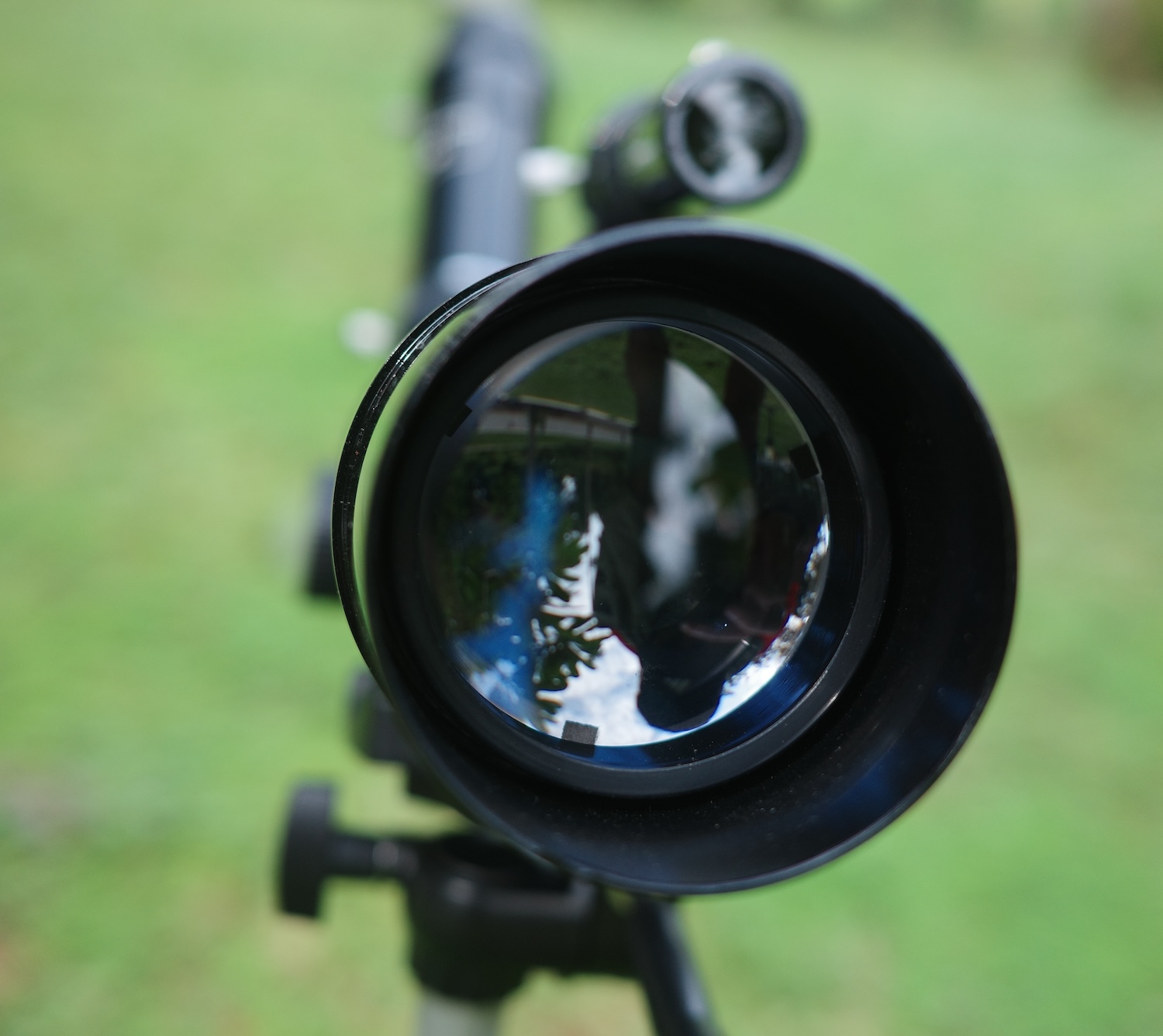The Optical Tube
The Celestron TravelScope 50 is a 50mm f/7.22 achromat refractor. At this size and focal ratio, I’d naturally expect there to be a fairly little chromatic aberration, and it is truly so.
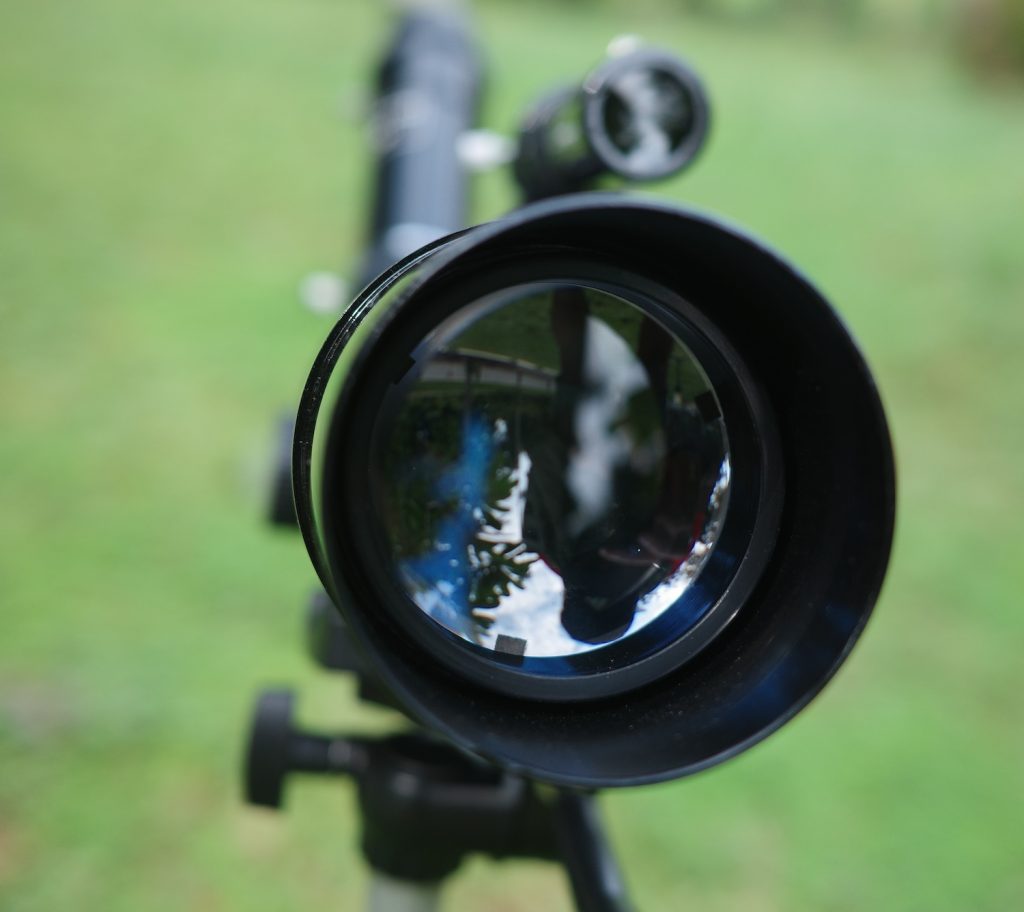
The 50mm aperture, while tiny, is sufficient to show us details of the Moon, planets, and the brightest deep-sky targets. Unfortunately, for whatever reason, I can see that the tube’s internal baffling, which is usually there to control light scatter and internal reflections, is poorly designed. This actually stops down the useable aperture of the telescope from 50mm to 20mm, making it essentially unable to deliver an image much better than the naked eye. Our eye dilates to around 7-8 mm under good conditions.
With only 20mm of aperture available in reality, the telescope becomes an f/18 and provides ridiculously dim images of even the Moon. In such a state, you are using a telescope that is about on par with what Galileo had 400 or so years ago.
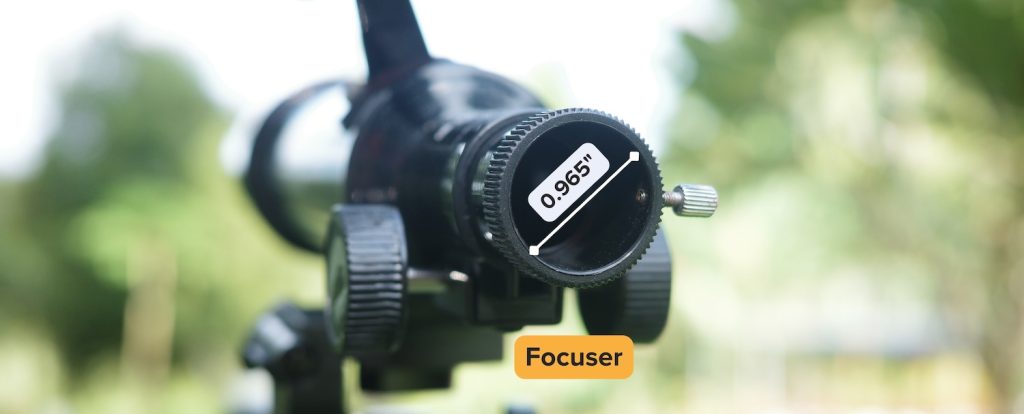
The TravelScope 50 has a 0.965” plastic rack-and-pinion focuser, which is the kind that is almost extinct these days. So using any quality diagonal besides the provided diagonal is going to be tricky, if not costly, and impractical.
The entire tube, focuser, and lens cell are made of plastic, making for a ridiculously lightweight instrument—only around 300 grams (less than ½ a pound).
Accessories
The Extremely Bad Eyepieces
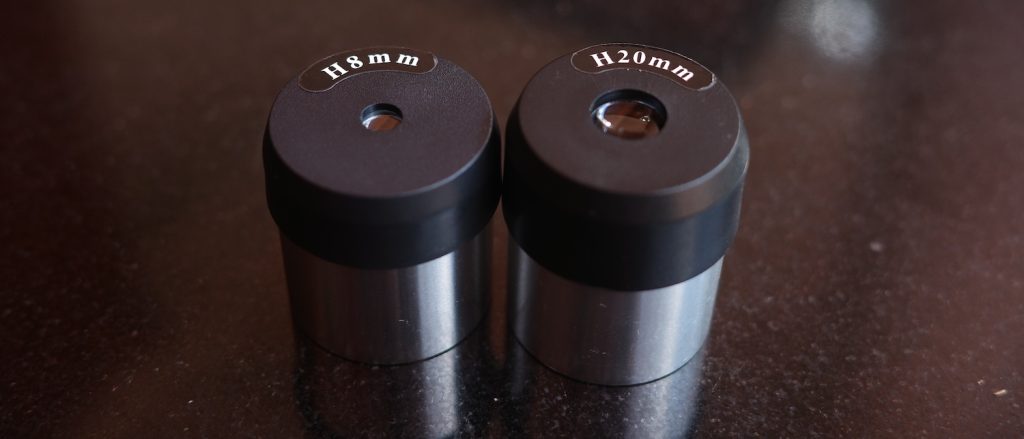
The TravelScope 50 includes two Huygenian eyepieces, 1.25” units with focal lengths of 20mm and 8mm, providing 18x and 45x, respectively.
These are extremely bad eyepieces made almost entirely out of plastic (including the lens), and they provide fuzzy views that require jamming my eyeball into them to even see. They also have narrow apparent fields of view, and the resulting effect feels like staring down a soda straw.
I pulled out two of my Plossl eyepieces, which are much better quality and tried those. With a 26 mm Meade Plossl, 13.8X, the image was significantly better than the stock 20 mm but still not great. The Plossl eyepieces provided a sharper and wider field of view but could not clear up the cloudy edges, which I expect were being caused by the prism in the correct image 45 degree diagonal.
A 10 mm Plossl was again better than the 8 mm eyepiece provided with the scope but the image was still dark and barely acceptable at 36X. Note that these eyepieces, taken as a pair, cost almost as much as the whole travel scope package. If you had this scope and had these eyepieces on hand, I would recommend them over the included eyepieces, but I would not recommend buying eyepieces for this package.
The Unusable Correct Image Diagonal
For a star diagonal, the TravelScope 50 includes a 45-degree erecting prism that adapts the 0.965” focuser to fit 1.25” eyepieces and flips images to be correct left-right. It’s of quite low quality and does not work well for astronomy in this or in any scope.
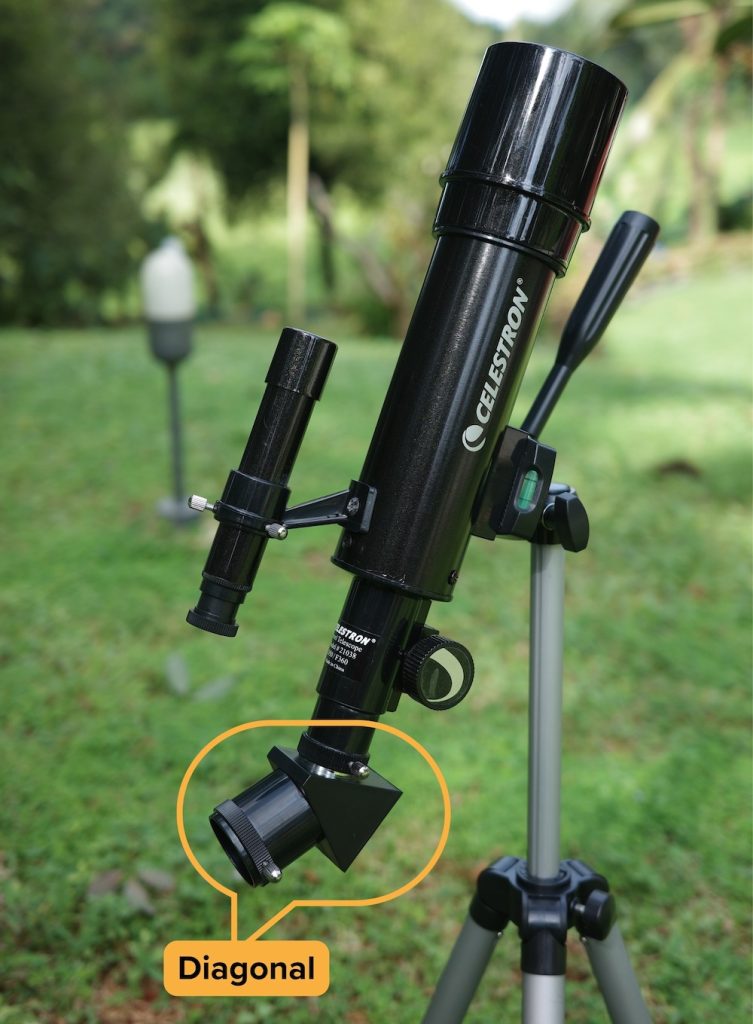
To view a target that is more than 40 degrees above the horizon, you have to get into a very awkward position. You could buy a 90-degree star diagonal but I would not recommend investing in that with this scope.
The Unnecessary Finder
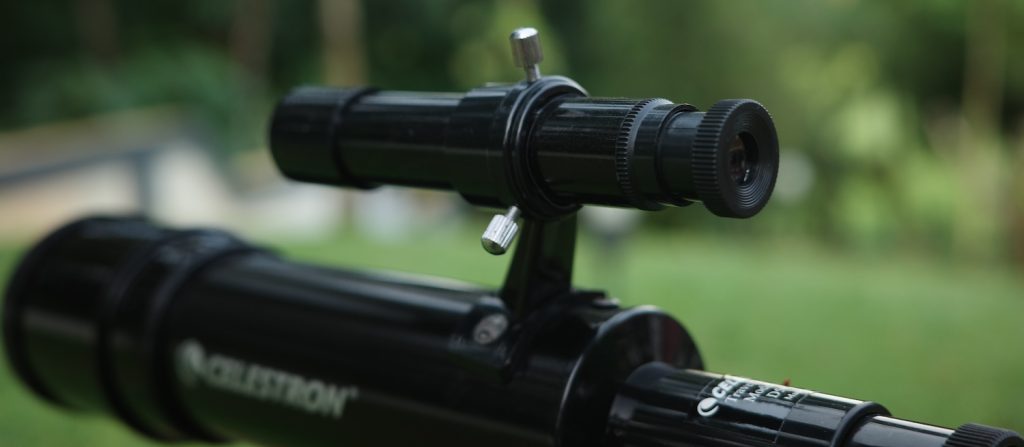
For a finderscope, Celestron includes the same 5×24 finder supplied with many of their low-quality entry-level scopes, like the PowerSeekers. Not only is this finder nearly impossible to align with the main telescope, but it also provides extremely dim and fuzzy images thanks to its single-element plastic objective lens.
TravelScope 50 is only slightly larger than some finderscopes and is simple to aim by sighting along the tube with a low-power eyepiece in the focuser. So the 5×24 finder is completely unnecessary.
A Backpack that Might Just Work
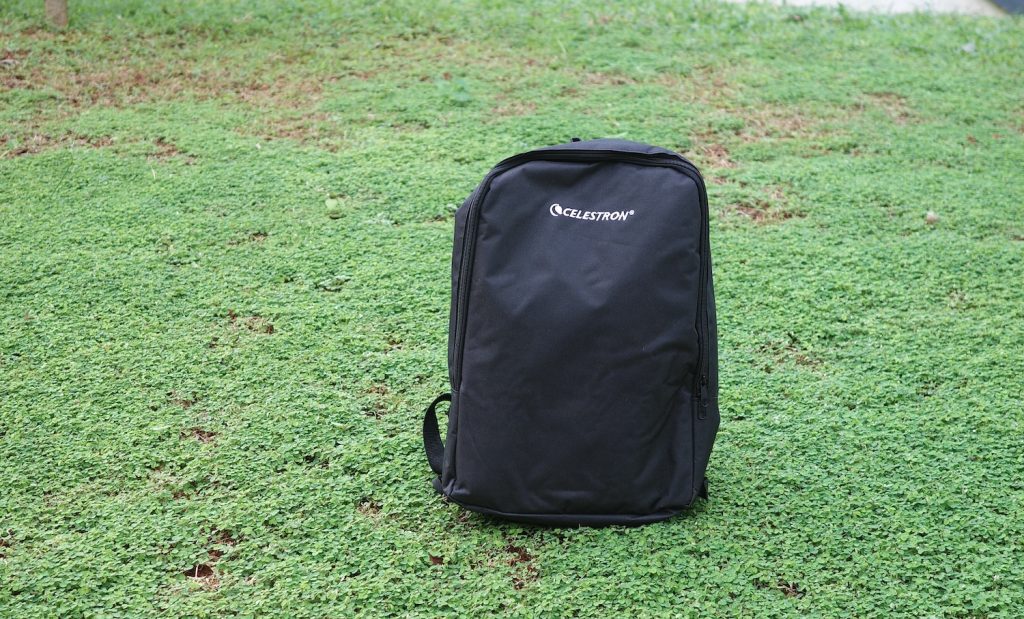
When I examined the included backpack, I found it to be of low quality but functional.
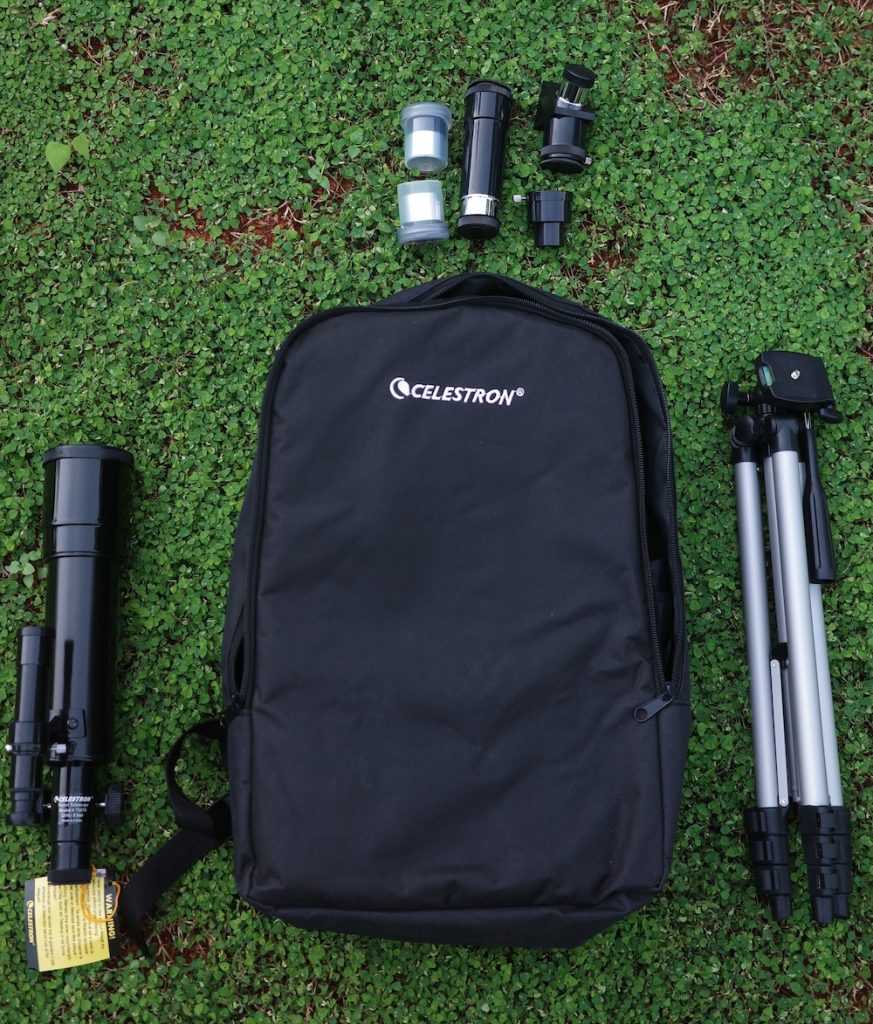
The backpack would work well for a child or teen. I believe most average adults could probably get enough room in the straps to use the backpack. I am over 6 feet tall and the straps were too short for me. I ripped one of the straps out, trying to put it on with both straps fully extended.
The Unusable Barlow Lens
You would not use the 3X Barlow during the day as the magnification would be too high. And the scope doesn’t have enough aperture to be used at night. So the included 3X Barlow lens is really a waste. A 2X might have provided some value, but only with upgraded eyepieces.
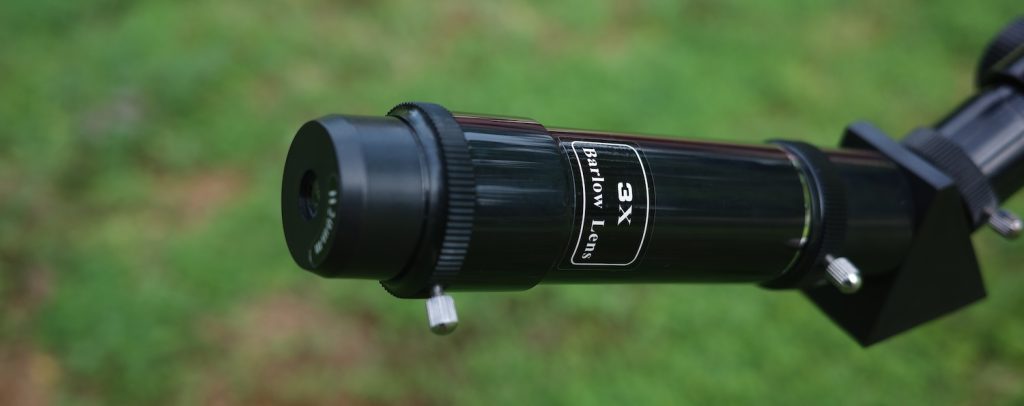
By the way, the 3X Barlow lens I received with my scope didn’t work. I tried it in this scope and in two of my other scopes. I could not bring the included eyepieces to focus nor could I bring the higher-grade Plossl eyepieces that I tried the scope with.
To Celestron USA’s credit, when I contacted them about the defective Barlow, they immediately sent me a new one. This one worked, but the scope can’t handle the magnification that the Barlow provides with the included eyepieces.
The Tripod
The tripod included with the TravelScope 50 is pretty low quality. Basically, it’s just a cheap camera tripod, like the kind I can order on Amazon for around £10. The good news is that the TravelScope 50 is so absurdly small and lightweight that it basically does not matter.
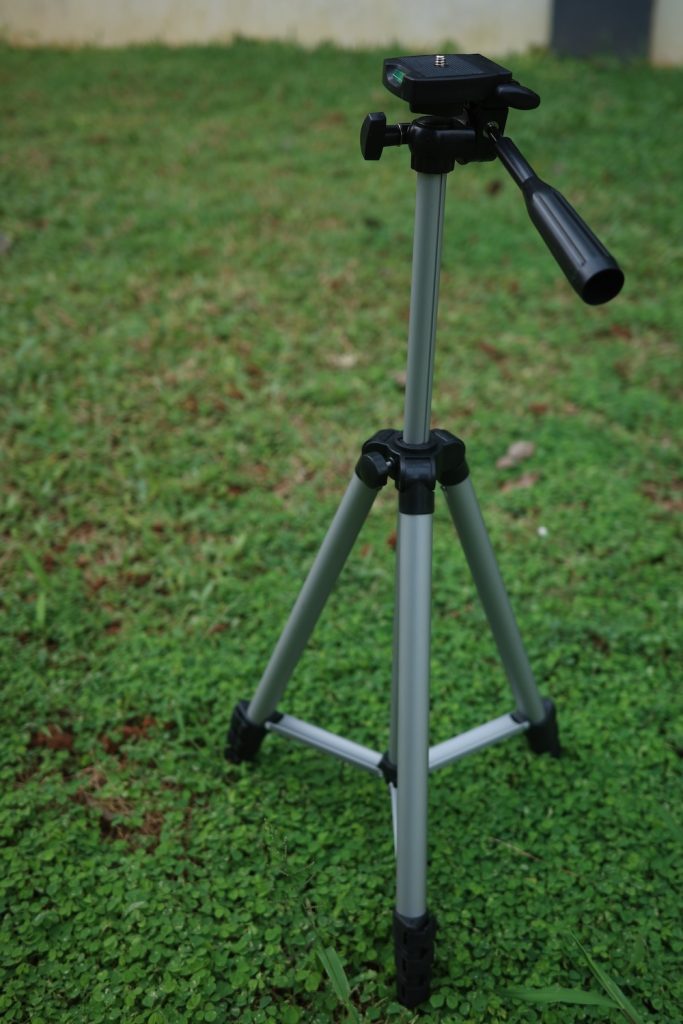
For once, Celestron has managed to supply a mount adequate for the scope it’s sold with, though the TravelScope 50 is so bad that this essentially doesn’t matter.
Alternative Recommendations
While the TravelScope 50 is at a price where it’s arguably quite hard to find a good telescope, there are a few options to consider.
- For a bit less money, the Celestron FirstScope is an option, and while it comes with good eyepieces and an easy-to-use mount, its optics are far from high quality.
What can you see with the Celestron TravelScope 50?
As a spotting scope, I would give it 2 out of 5 stars based on the package, but the optics are not great and the included eyepieces are very low quality.
As a daytime spotting scope, the TravelScope 50 produces a fairly dim image with a cloudy edge around the field of view when used with the H20 mm eyepiece, which provides 18X. As long as you are not too fussy about colour and clarity, this arrangement is at least usable in bright sunlight. The central 50% of the image can be brought into fairly sharp focus.
In my experience, when fitted with the 8 mm eyepiece at 45x, the image is just awful. It is dark, difficult to focus, and has significant colour aberration, even in bright sunlight. I consider this eyepiece unusable for spotting scope service.
As an astronomical telescope, this package fails in so many ways. I give it 1 star out of 5 as an astronomical telescope.
The 45-degree correct image diagonal does not work well for astronomy in this or in any scope. To view a target that is more than 40 degrees above the horizon, I have to get into a very awkward position. You could buy a 90-degree star diagonal, but I would not recommend investing in that with this scope.
With the included eyepieces, you could view the Moon, but typically bright star clusters are very dim and the image is not clean anywhere outside of the center 50% of the field of view with the included eyepieces.

